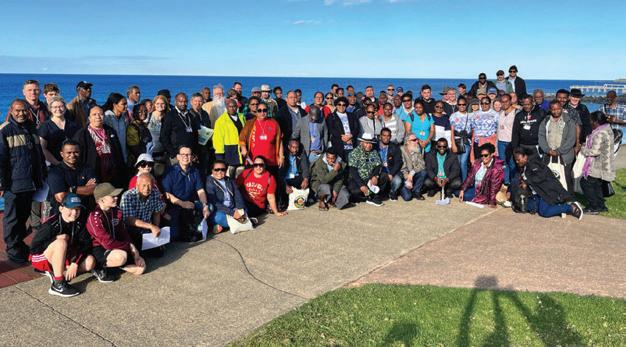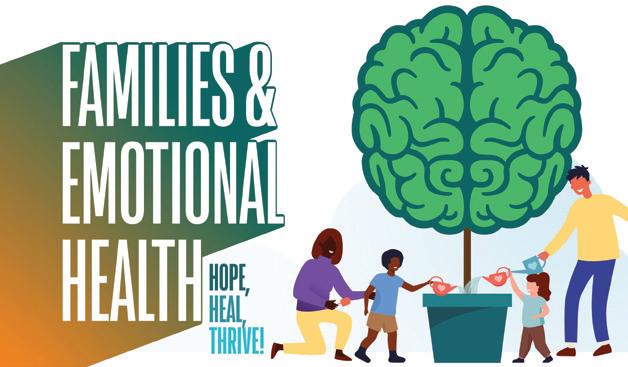in the Last Days



 By John Peckham
By John Peckham

Imagine a husband saying to his wife, or vice versa, “I love you, but I do not want to know anything about you. I love you, but I do not want to hear anything you say.” Something is seriously wrong here. That is a bit like saying, “I love God, but I do not want doctrine. I want a relationship with God, but I’d rather do without theology.”
At times Adventists have been accused of being too doctrinally focused, and there’s always a danger of prioritizing doctrine in ways that exclude other aspects of faith and life. But I am convinced that rightly recognizing and cherishing doctrinal understanding need not do so, and at times we might have overcorrected so that discipleship of the mind is not given enough attention.

Theory and practice should stand together as inseparable. Faith without works is dead (James 2:26). Theory without practice is likewise dead. On the other hand, if we have practice without theory, what are we practicing and why? Practice without theory is, at best, blind and, at worst, dead in another way or contributing to spiritual death. Theory versus practice is a false choice.
Here, perhaps a better word than theory is faith. Faith and practice should be united, mutually enhancing one another. God wants us to dedicate all of ourselves to Him and His mission: “You shall love the Lord your God with all your heart, with all your soul, with all your strength, and with all your mind” (Luke 10:27).
This issue of Adventist World focuses on a pillar of Adventist faith—the state of the dead, which holds many practical implications, from facing last-day deceptions to the way we live and value life here and now. What we truly believe is shown in the way we live, especially in tough times.
Let us not emphasize doctrine at the expense of living out our faith, then, but let us also not neglect the equally vital task of loving God with our minds—studying and learning about God, shaping our worldviews to be more aligned with biblical teachings, and working toward “bringing every thought into captivity to the obedience of Christ” (2 Cor. 10:5).
As Ellen White wrote: “The question is, ‘What is truth?’. . . You are to dig for the truth as for hidden treasures. You are to find where the treasure is, and then you are to plow every inch of that field to get the jewels. You are to work the mines of truth for new gems, for new diamonds, and you will find them.”*
Alex, 12, and his friends from a London Pathfinder club praise God in song at the evening worship service July 27 at the Trans-European Division Pathfinder Camporee. More than 2,600 Pathfinders attended the camporee in Sopron, Hungary.

—Zeno Charles-Marcel, General Conference Health Ministries associate director, addressing church health leaders and advocates at the Inter-American Division Health Symposium in Miami, Florida, July 29. Charles-Marcel’s presentation delved into what Adventist health leaders are calling “the sanitarium of the twenty-first century”—lifestyle service centers where health practitioners can share with others some of the knowledge that the Seventh-day Adventist Church has known for more than a century.
The number of Seventh-day Adventist church members in Papua New Guinea. This is the first time in the history of the denomination in that country that the church membership has exceeded that number. The growth is attributed to the deep commitment by members to get involved and share their faith. Since 2020 more than 6,000 new churches have started in that country.
Church members were asked if they believed that the soul is a separate, spiritual part of a person that lives on after death. 48%
—Min-Seop Kim, Xindien church pastor, about the evangelistic series held at 21 churches in the Taipei, Taitung, Taichong, and Kaohsiung areas of Taiwan. Leaders from the Northern Asia-Pacific Division and the Korean Union Conference served as speakers, while service teams and evangelistic teams from various institutions, churches, and organizations, including South Korea’s Sahmyook University, led the simultaneous evangelistic series.
The number of years that the Adventist Church has been active in the country of Fiji. On August 3 the Fiji Mission commemorated this milestone and acknowledged the sacrifice of the church’s pioneers and missionaries of the late 1800s. The celebration was held at the mission headquarters in Suvavou and was attended by retired mission workers, representatives from Suvavou Village, church members, and staff from the Fiji Mission and Trans Pacific Union Mission.
N=55,997
Source: 2017-2018 Global Church Member Survey
Data provided by the General Conference Office of Archives, Statistics, and Research
The number of new church members the Adventist Church in Mexico welcomed during the first six months of 2023. The intense evangelism efforts across the nation ended with a national online evangelism campaign from Mexico City, Mexico. The eight-day series was the third annual national online evangelistic campaign and saw thousands of church leaders and members sharing the gospel in cities and communities throughout Mexico’s five unions, or major church regions, since before the start of the year.
“The goal of the health message is the soul, every aspect of a person. It should work [with] everything complete, everything functioning the way God intended it to function.”
“During the past three years of the pandemic there have been many concerns and doubts about whether an evangelistic meeting would be possible. But through this experience we have regained our confidence, and we are very grateful that the passion for mission has been reignited.”
—Udolcy Zukowski, Pathfinder director for the South American Division, about the voted bill of the Education and Culture Committee of Brazil’s Senate. The bill named every September 20 to be National Pathfinder Day.
“We give God the praise for [the] impact that we’ve had on the community. The progress has been amazing. We’re getting volunteers from church members and nonmembers. These volunteers are passionate about their service. They serve in a loving, compassionate way. My appeal to other pastors is to find ways to connect with the community. That’s how churches thrive. That’s how they grow and impact society.”
—Dion Henry, pastor of Altamonte church in Florida, United States, about the church’s weekly food giveaway. Cars fill the church’s parking lot every Tuesday. Some recipients arrive hours before the distribution starts. As cars line up, volunteers lay out an array of fresh fruit and vegetables, cheese, eggs, canned goods, bread and pastries, water, and pet food.

The number of young people that gathered for the third Indonesia Pathfinder Camporee. Pathfinders came to Buperta, Cibubur, East Jakarta, to join the camporee organized jointly by the Adventist churches in the West Indonesia and East Indonesia regions. This event, themed “Niscala,” which means “calm” and “firm,” left a lasting impression on the hearts of those who attended.
Would you like to keep up with what’s happening in our church? Sign up today to receive our weekly newsletter that features news stories, inspirational stories, videos, and more.
www.adventistreview.org/ newsletter-signup
“As a good Pathfinder, as someone who loves Pathfinder Clubs, I was thrilled. As I was witnessing the proceedings, I thought of every club director, every counselor, every club member’s parent, every Pathfinder who struggles to be acknowledged and valued. Now we will have a very special day of commemoration. And it is the first country in the world to have a National Pathfinder Day.”

The picture of Noah’s ark as a round wooden boat with giraffes, elephants, zebras, pandas, and monkeys hanging out the windows is a familiar and well-loved image in children’s stories. The question, though, is whether this picture is only a children’s story. Did a catastrophic flood actually cover this entire planet?
The Faith and Science Conference 2023, held by the South Pacific Division (SPD) of the Seventh-day Adventist Church on Australia’s Gold Coast, focused on this question. More than 160 people gathered at Surfers Paradise July 3-6 to explore the historicity of the biblical flood account and its related geological issues. Up to 290 people watched one or more of the video recordings of the presentations on Facebook.
Presenters at the conference included Stacie Hatfield and Richard Davidson from Andrews University; Michael Oard and Tasman Walker from Creation Ministries International; Birgir Óskarrson from the Icelandic Institute of Natural History; and Limoni Manu from Fulton
Adventist University College. The event also featured Suzanne Phillips and Leonard Brand from Loma Linda University and Joses Imona from Pacific Adventist University.
The speakers presented a flood of fascinating biblical and scientific evidence and pointed out the evidence that supports a global flood. Presenters agreed that one’s beliefs need to be based on the Bible and that using the biblical position as a starting point leads to achieving better science. They also acknowledged areas of uncertainty and the need for further research and understanding.
“To see how the biblical narrative is supported over and over in science just reinforced my belief in the Bible as God’s Word,” Jean Carter, Adventist Schools Australia director, said. “I also really appreciated how the presenters provided us with honest scientific reporting.”
“The conference provided an excellent opportunity to review the recent advances in creation science, thus supplying an alternative to the prevailing naturalistic worldview embraced by secular science,” SPD field secretary Darius Jankiewicz said.
SPD education director Malcolm Coulson noted that “Adventist education has always promoted the importance of critical thinking and ongoing dialogue to advance our understanding of the faith-science interface.”
Participants said they appreciated the opportunity to learn and deepen their confidence in the Bible. “The Faith and Science Conference has equipped me, as a school chaplain, with evidence and answers to support what the Bible teaches about origins and, in particular, the global Flood,” Dayne Habermann, a pastor serving at the Ipswich Adventist School, said.
Steven Simmons, from Mountain View Adventist College in Doonside, New South Wales, Australia, agreed. “I thoroughly enjoyed the worship time that was incorporated into the program,” he said. “From the perspective of an Adventist high school science teacher it was great to learn how I can ground students in a stronger relationship with God and His Word.”
Laura Lecciones, an Adventist teacher at Swan Christian College in Perth, Western Australia, said, “It has been eye-opening to see the insights in the geology of today that support the biblical account of Noah’s flood. I left encouraged and equipped to share how God’s Word is just as relevant today as millennia ago.”
There was strong support for holding another conference to focus on cosmology, which would form a trilogy of faith and science topics. Using artificial intelligence for Adventist mission was also a topic of interest in the faith and science space, organizers said.
“If the apostle Paul was a clinician, he would suggest the diagnosis of our times is relational chaos,” Morgan Medlock, an experienced millennial, Adventist, Harvard-trained psychiatrist and health policy expert, said in her keynote presentation at the recent 2023 Adventist Conference on Family Research and Practice.
The fully online event is part of a partnership of the Adventist Church’s General Conference Department of Family Ministries and three entities at Andrews University: the Department of Discipleship in Lifespan Education at the Seventh-day Adventist Theological Seminary; the School of Social Work; and the Institute for the Prevention of Addiction. In 2023 the conference was headlined as Families and Emotional Health under the motto “Hope, Heal, and Thrive!”
In her keynote Medlock, also a Master of Divinity graduate of the Seventh-day Adventist Theological Seminary, reflected on the social situation according to what Paul described in 2 Timothy 3:1-5. The apostle wrote that “in the last days men will be lovers of themselves” (verses 1, 2). Medlock then connected it to the lingering effects of the COVID-19 pandemic on families, and then shared biblical principles that can help families to recover and move “from breakdown to breakthrough.”
Medlock said that the pandemic uncovered relational disorder in our families. “We saw an increase in adverse childhood experiences,” she said. “We saw an increase in anxiety and depression, middle age crises, parental distress and trauma, and households in disarray.”
She shared how even secular authors are acknowledging the chaos reigning in many contemporary families and its disastrous effects on institutions and society in general.
Secular authors are stating that the solution to family relational chaos is to adopt a “chosen” family, or, as an expert defined them, “the people who will show up for you no matter what.”
From a spiritual standpoint, Medlock said, “we have a chosen family, [which] is not created through artificial relationships with drifting individuals. That chosen family comes from none other than the Son, Jesus Christ, who said, ‘You did not choose Me, but I chose you’ [John 15:16].”
She explained further, “The biblical view of chosen family is that as we develop intimacy with Jesus Christ, we are in fact able to participate in the intimacy that He has with the Father.” Jesus loves us as He is loved by the Father, Medlock

Following this model will be transformational for our families, Medlock emphasized. When we accept being part of God’s chosen family, we are empowered by the Spirit to love our families as the Son loves us.
“This intimacy we have with Father, Son, and Holy Spirit empowers us to love others not according to our family history but our spiritual history,” Medlock said. “Through the power of God’s Spirit . . . the relational chaos of our times loses its grip on us. . . . We can now forgive others as we have been forgiven. We can now have a family that is rooted in empowerment, coming alongside to build confidence and inspire us in our families to be who God created us to be. Our families’ greatest need is not a method, but a person, Jesus Christ, to take us from breakdown to breakthrough.”
Nearly 200 religious liberty leaders, scholars, and advocates from around the world met for the ninth World Congress of the International Religious Liberty Association (IRLA) in Silver Spring, Maryland, August 21-23. The international event invited attendees to discuss “a wholistic understanding of freedom of religion or belief as a pivotal human right,” organizers said.
In his welcoming remarks on August 21, Ted N. C. Wilson, president of the General Conference of Seventh-day Adventists, welcomed attendees, reminding them of the historical focus of the denomination on the topic. “Adventist pioneers . . . saw in religious liberty an incontrovertible value without which our very humanity could be at risk of being diminished and impaired,” thus embracing “the priceless value of religious freedom, and the foundation of freedom itself,” he said. Wilson shared how Adventist pioneers fought against oppression of others, slavery, and early attempts at Sunday laws. “Adventist leaders officially adopted a solidarity with the whole human family through the advocacy of religious liberty,” he reminded attendees.
The opening program also included words by IRLA’s president, ambassador John Nay. Nay called to reflect on the implications of supporting religious liberty. “We say we believe in religious freedom for all people,” he said. “But do we really believe it in our hearts?” Nay called to move past supporting religious freedom just for our own group and really embrace an advocacy that takes every human being into account.
IRLA secretary-general Ganoune Diop agreed, as he discussed a comprehensive understanding of religious freedom, which he defined as “the right to profess, practice, and propagate one’s beliefs without coercion, intimidation, or manipulation.” Religious freedom is “freedom from being forced to do something that is against one’s deeply held convictions or against one’s conscience,” Diop said. “[It] is a centerpiece, which occupies a pivotal position among freedom and rights.”
Diop stated that the creation of the IRLA 130 years ago “is connected to the conviction that religious freedom is a moral imperative” that “is part of God’s image in humans.” He emphasized, “Freedom is constitutive to who we are meant to be. Without
IRLA ninth World Congress encourages participants to reflect and act.

freedom, we are incomplete. . . . [And] the determination to spread the awareness of freedom of thought, conscience, and belief is necessary to what it means to be a human being.”
Breakout sessions invited attendees to reflect on the history, current challenges, and opportunities for religious freedom advocates. They included discussions on religious nationalism, attitudes to religious minorities, and ideas for proactive actions. Attendees also participated in a visit to the National Archives Museum in downtown Washington, D.C., and a closing banquet and award ceremony at a venue close to the White House.
Other keynote speakers during the event included His Excellency Adama Dieng, former U.N. under-secretary-general and special adviser of the secretary-general on the prevention of genocide; ambassador Sam Brownback, former U.S. ambassador-at-large for International Religious Freedom; and Knox Thames, former U.S. special adviser for religious minorities at the U.S. State Department.
The IRLA was founded in 1893 by a group of Seventh-day Adventists who were concerned about religious persecution and discrimination. The organization was created to advocate for the religious freedom of all people, regardless of their faith and background. “The IRLA addresses religious freedom issues and provides support and resources to individuals and communities facing persecution,” organization leaders said. “[It also] fosters dialogue and cooperation among people of various faiths and philosophical persuasions.”
STORMCo youth group is extending its reach beyond the South Pacific.
The Seventh-day Adventist Church in Australia took a small group of seven volunteers on a STORMCo mission trip to Laos from July 7 to 21.
Service to Others Really Matters (STORMCo), an initiative of the Australian Union Conference (AUC) youth ministries department, has been running for more than 30 years internationally and across Australia.
The mission trip was the first of its kind to be held in Laos, as part of AUC’s Global Mission Partnership Program. The group was hosted by Phonsivan’s Namtipsavan Bilingual School, a kindergarten, primary school—up to grade 3—and an English language center located in Xiangkhouang Province. While there, the team conducted a STORMCo/VBS program for the roughly 70 junior and teen young people in attendance.
“Each day began with team members being immersed in classrooms teaching and assisting in the teach-
ing of English,” Murray Hunter, AUC media project officer and associate ministerial director, said. “The morning teaching program was then followed by an afternoon filled with singing, stories, games, physical challenges, and crafts, as well as the team being taught the finer points of traditional Lao cooking!”
“This first STORMCo mission was a resounding success despite the challenges that can present themselves while ministering in a country that is 95 percent [from a non-Christian faith],” Hunter said. “It’s hoped that this trip will be the first of many that will leave our shores to go and help the church spread the good news of the gospel respectfully and sensitively in a country full of opportunity and possibility.”
For participant Tulip Nguyen, a highlight was the time they spent at Namtipsavan Bilingual School. “Each day we were given the opportunity to work in classrooms, converse over lunchtime, have a friendly football match, run our STORMCo program, and teach English in the afternoons.

“However, the true blessing in all that we did was building friendships,” she continued. “Despite the cultural and religious differences, we were able to connect and bring a glimpse of joy and hope to the community.”
The AUC has initiated plans for three STORMCo mission trips to
Laos in 2024. The objective is to send volunteers annually to the region, expanding the reach of their community programs.
According to the STORMCo website, Storm Company began in Queensland, Australia, after a high school chaplain recognized that Christian students wanted to do something rather than just be told about Christianity. They were hungry to put their faith into practice. The team set out for Moree, New South Wales, without a plan, except to help out any way they could.
The life-changing experience of the first team in 1992 inspired others to follow. Teams adopted the name STORMCo in 1993 and began visiting other outback communities.
Within a few years there were STORMCo teams in every Australian state. The “STORMCo Guidebook” was written in 2000 to record the foundations that allowed STORMCo to work in Australia, New Zealand, Europe, North America, and Africa, as well as the South Pacific.
STORMCo trips continue to increase in number around the world, organization leaders reported. It is a tribute to the Spirit of Jesus Christ represented in those who humbly choose to give of themselves in an adventure of service to others, they said.

One fundamental doctrine that has long been a cornerstone of Adventist theology is the understanding of the state of the dead. This doctrine holds significant implications for our understanding of God’s character, the nature of human beings, and last-day deceptions. This article is a brief examination of the Bible’s teachings regarding the state of the dead and its relevance in discerning last-day deceptions.
The Bible describes death as a state of unconscious sleep. When a person dies, their body returns to the dust, and their breath (spirit) returns to God (Eccl. 12:7). They remain in a state of rest, awaiting the resurrection. Ellen White made many insightful statements on the subject, and in The Acts of the Apostles she aptly summarizes the Bible’s teaching on this point. She writes:
“The Scriptures declare that ‘the dead know not anything.’ Ecclesiastes 9:5. Their thoughts, their love, their hatred, have perished.”1
When God formed the human being from the elements of the earth, all the organs—the heart, lungs, kidneys, liver, spleen, brain, etc.—were present. They were all perfect, but lifeless. Then God breathed into this lifeless matter the breath of life, and “man became a living being” (Gen. 2:7). The scriptural equation is straightforward: the dust of the ground (earth’s elements) + the breath of life = a living being, or living soul. The union of earth’s elements with the breath of life resulted in a living being, or soul. This “breath of life” is not limited to people. Every living creature possesses it. The Bible, for example, attributes the breath of life to both those animals that went into Noah’s ark and those that did not (Gen. 7:15, 22).
The Hebrew term in Genesis 2:7 that has been translated “living being,” or “living soul,” is nephesh chayyah. It is important to note that the Bible says that man became a living soul. Nothing in the Creation account indicates that man received a soul. The soul is not some kind of separate entity that at Creation was united with the human body. The importance of the Creation account for properly understanding the nature of humanity cannot be overstated. By stressing this organic unity, Scripture portrays a human being as a whole.

As we have already mentioned, in the Old Testament “soul” is a translation of the Hebrew nephesh. In Genesis 2:7 it denotes humanity as a living being after the breath of life entered into a physical body formed from the
elements of the earth. Similarly, a new soul comes into existence whenever a new human life comes into being, each “soul” being a new unit of life uniquely different, and separate, from other similar units. This quality of individuality in each living being, which constitutes it a unique entity, seems to be the idea emphasized by the Hebrew term nephesh. When used in this sense, nephesh is not a part of the person, rather it is the person, and, in many instances, is translated “person.” The nephesh is not immortal, but subject to death (cf. Rev. 16:3). It can be destroyed (cf. Matt. 10:28).
Unlike many Christian denominations that teach the immortality of the soul, Adventists believe the Bible teaching that immortality is a gift granted to the righteous at the resurrection. The concept of an immortal soul derives from an unbiblical, pagan influence that crept into Christian theology. In fact, the allegation and insinuation that humans could live eternally apart from God is a lie first told by Satan, leading up to the fall of Adam and Eve (cf. Gen. 3:4).
“The only one who promised Adam life in disobedience was the great deceiver. And the declaration of the serpent to Eve in Eden—‘Ye shall not surely die’ —was the first sermon ever preached upon the immortality of the soul. Yet this declaration, resting solely on the authority of Satan, is echoed from the pulpits of Christendom and is received by the majority of mankind as readily as it was received by our first parents.”2
“The dead know nothing” (Eccl. 9:5).
“Their love, their hatred, and their envy have now perished” (verse 6).
There is no conscious existence between death and the resurrection. Therefore, the dead do not experience heaven or hell immediately after dying. The next conscious moment for the deceased will occur at the resurrection. The return of Jesus Christ will mark the resurrection of both the righteous and the wicked. Those who have accepted Christ as their Savior will be raised to eternal life, while the unrepentant will face the second death, resulting in the complete and eternal annihilation of the entire human being. As Ellen White puts it: “At His coming the righteous dead will be raised, and the righteous living will be changed.”3 “At the close of the thousand years the second resurrection will take place. Then the wicked will be raised from the dead and appear before God for the execution of ‘the judgment written.’ ”4
Understanding the state of the dead has profound implications for discerning last-day deceptions. In the
context of the last days, various false teachings and deceptions will arise. By holding fast to the Bible’s teaching on the state of the dead, believers can avoid falling into doctrinal traps and maintain their focus on biblical truths. Here are a few ways this doctrine plays into last-day deceptions.
Spiritualism and Necromancy: Spiritualism, the belief that we can communicate with the dead, is a prevalent deception in our time. By adhering to the biblical teaching of death as sleep, we are shielded from being misled by supposed messages from deceased loved ones. Instead, we seek our guidance and comfort solely from God’s Word and the presence of the Holy Spirit.
Immortality of the Soul Deceptions: Many false teachings emphasize the innate immortality of the soul, leading people to believe in the existence of an eternal soul that endures after death. This notion conflicts with the biblical doctrine and opens the door to misinterpretations of salvation, judgment, and eternal destiny.
“Satan has long been preparing for his final effort to deceive the world. The foundation of his work was laid by the assurance given to Eve in Eden: ‘Ye shall not surely die.’ ‘In the day ye eat thereof, then your eyes shall be opened, and ye shall be as gods, knowing good and evil.’ Genesis 3:4, 5. Little by little he has prepared the way for his masterpiece of deception in the development of spiritualism.”5
“Through the two great errors, the immortality of the soul and Sunday sacredness, Satan will bring the people under his deceptions. While the former lays the foundation of spiritualism, the latter creates a bond of sympathy with Rome.”6
Deceptive Appearances: The Bible warns that in the last days false christs and prophets will appear, performing signs and wonders to deceive even the elect (see Matt.
24:24). By affirming that the dead are in a state of unconscious sleep, Adventists are less susceptible to deception by counterfeit miracles attributed to deceased individuals.
“Satan will appear as an angel of light, with great power and heavenly glory, and claim to be the Lord of the whole earth. He will declare that the Sabbath has been changed from the seventh to the first day of the week; and as lord of the first day of the week, he will present this spurious sabbath as a test of loyalty to him.”7
These quotations from Ellen White’s writings demonstrate the connection between the state of the dead and last-day deceptions. Her teachings emphasize the biblical understanding of death as sleep, and caution against being deceived by spiritualism and false teachings that distort the truths of God’s Word in the end-times.
The Adventist belief on the state of the dead is deeply rooted in biblical truth and plays a crucial role in shaping our understanding of God’s character and the nature of humanity. It provides a robust defense against last-day deceptions, guiding believers to remain steadfast in their faith and reliant on the authority of God’s Word. As we navigate the complexities of the last days, let us cling to this essential doctrine, allowing it to shape our worldview and protect us from the subtle snares of falsehood.

3 Ibid., p. 322
4 Ibid., p. 661.
5 Ibid., p. 561.
6 Ibid., p. 588.
Takunda Karl Kubvoruno is a legal practitioner in Zimbabwe and the first elder at Emmanuel Seventh-day Adventist Church in the Zimbabwe West Union
1 Ellen G. White, The Acts of the Apostles (Mountain View, Calif.: Pacific Press Pub. Assn., 1911), p. 289. 2 Ellen G. White, The Great Controversy (Mountain View, Calif.: Pacific Press Pub. Assn., 1911), p. 533. 7 Ellen G. White, Manuscript Releases (Silver Spring, Md.: Ellen G. White Estate, 1993), vol. 19, p. 282. ConferenceBy holding fast to the Bible’s teaching on the state of the dead, believers can avoid falling into doctrinal traps and maintain their focus on biblical truths.
One of the devil’s great strategies is to deceive millions of people through spiritualism. Why is spiritualism so attractive to so many people? Who are these spirits? Where do they come from? How can we keep from being deceived by the designs of the devil? This Bible study will provide solid, biblical answers to these questions.
1. How did the apostle Paul describe the spiritual struggle every Christian must face?
“For we do not wrestle against flesh and blood, but against principalities, against powers, against the rulers of the darkness of this age, against spiritual hosts of wickedness in the heavenly places” (Eph. 6:12).
The Christian’s warfare is against
2. What counsel did God give Israel regarding astrology, witchcraft, omens, and sorcery? Read the text below and fill in the blanks.
“For all who do these things are an abomination to the Lord, and because of these abominations the Lord your God drives them out before you” (Deut. 18:12).
Our Lord’s condemnation of the agents of spiritualism is strong. According to the Bible they are an to the .
3. Is it possible for the dead to speak to those who are still living? Summarize your answer on the lines below.
“For the living know that they will die; but the dead know nothing” (Eccl. 9:5; see also verse 10).
“As the cloud disappears and vanishes away, so he who goes down to the grave does not come up. He shall never return to his house, nor shall his place know him anymore” (Job 7:9, 10).
4. Who are the “spirits” of spiritualism?
“For they are spirits of demons, performing signs” (Rev. 16:14).
“And no wonder! For Satan himself transforms himself into an angel of light” (2 Cor. 11:14).
The real force behind each spiritualistic manifestation is , for they are really the spirits of
The devil is a fallen angel. He has the ability to pretend to be the spirit of a dead loved one. The devil is a wise and cunning foe. He uses the power of spiritualism to deceive.
5. Will the devil use spiritualism in the last days to deceive multitudes? Read the text below and circle who will be deceived by the devil.
“The light of a lamp shall not shine in you anymore, and the voice of bridegroom and bride shall not be heard in you anymore. For your merchants were the great men of the earth, for by your sorcery all the nations were deceived” (Rev. 18:23).
The “light of a lamp” represents God’s Word (Ps. 119:105). When we turn from the clear truths of God’s Word, our minds are vulnerable to spiritualistic delusions.
6. How can we be protected against the deceptions of the evil one? Where can we find safety? Read the text below and underline the two things that provide safety against the devil’s deceptions.
“And when they say to you, ‘Seek those who are mediums and wizards, who whisper and mutter,’ should not a people seek their God? Should they seek the dead on behalf of the living? To the law and to the testimony! If they do not speak according to this word, it is because there is no light in them” (Isa. 8:19, 20).
The law of God reveals His eternal principles of living. The testimony of the Bible reveals Jesus in all His fullness. Each truth of the Bible is about Jesus; the testimony of Scripture witnesses of Him (John 5:39). In Jesus, through His Word, we are secure against the wiles of the devil.
7. What is Jesus’ prayer regarding His children? Read the text below and fill in the blank.
“Sanctify them by Your truth. Your word is truth” (John 17:17).
The devil may attempt to deceive us. He may confront us with powerful signs and omens. He may play on our sympathies by appearing as a dead loved one. But as we fill our minds with the Word of God, we will be secure. All the demons in hell cannot deceive us if we cling to Jesus and His Word.
Jesus is stronger than the evil one. He cast Satan out of heaven. He defeated the devil on the cross. He conquered death itself. In Jesus we are secure, now and forever.
Iwas born into a nominal Lutheran family in my native Finland. I had read Arthur Maxwell’s Bible stories1 several times at an early age and dedicated my life to Jesus. As a teenager I promised the Lord that I would serve Him as a Lutheran minister. However, computer science got the upper hand. Back then the personal computer industry was in its infancy, and I was intrigued.
A few years later as a 21-year-old college student, I was far from home, studying to become a computer engineer. I was active in a local Lutheran young adult group. Some of us became close, and we formed our own small group to pray and study Scripture. Little did I know that one of my new friends was a former spiritist. Even though Amy2 believed in Jesus, she was still communicating with the spirits. Our other friend, Lucy, was a believer.
It’s the same reasoning one hears today. If you contact your dead loved ones, they will help you become successful and prosperous in life. Amy followed this thinking because she thought it sounded good, but it isn’t. It’s a powerful lure; a deception that ruins men and women. These dead spirits are actually demons masquerading as deceased people. The demons work to destroy unsuspecting men and women. This is why the Lord has forbidden all contact with the dead (Deut. 18:10-12). If only everyone knew this simple biblical truth—the dead know nothing, and we cannot communicate with them or they with us (Eccl. 9:5, 6, 10).
One summer evening in 1994 I was in Amy’s home with Lucy. We were praying and discussing life issues when

suddenly a demon attacked Amy. She screamed when she and Lucy saw the demon trying to grasp hold of her. I couldn’t see anything, but I sensed someone else in the room. It was a fearful moment. I had never experienced anything such as this before. All I could think of was to quickly pray for help. As I prayed, Amy and Lucy described what they were seeing. They saw an angel enter the room, and the angel chased the demon away. The feeling of threat passed, and I felt peace.
Amy told me the next day that the angel stayed in the room that night, sitting at the end of her bed while she fell asleep. We also discovered someone had committed suicide near where we were at the same time the demon had attacked my friend.
As a member of the Lutheran Church, I had many unanswered theological questions. I asked the pastors, but didn’t receive satisfying answers. So the Lord answered them for me by providing access to a copy of The Great Controversy, by Ellen G. White. I received all the answers I needed and was seriously considering joining the Seventh-day Adventist Church.
About that time I woke up one night sensing someone in my room, although no one could be seen. I believe it had to do with my desire to be baptized. For a moment it felt as though someone was trying to grab hold of me. All I could do was pray. Slowly the feeling of threat passed, and again I felt peace, as I had the first time. Sadly, also as before, I heard much later that someone had committed suicide around the same time I was experiencing this attack.
These two frightening experiences made the choice for me. I realized there is a real war between God and the devil. One does not dabble with the spirits without
consequences. Communion with the so-called spirits of the dead ruins people. No one needs to convince me of the great controversy between good and evil. I have seen it firsthand. Soon after this encounter I was baptized and joined the Seventh-day Adventist Church. I was happy to see Amy do the same.
I graduated with a degree in computer engineering, married, and eventually went to study theology first at Helderberg College in South Africa, then at Newbold College in England.
I was a pastoral intern traveling to a conference with a group of pastors on a ferry between Finland and Sweden. Several years had passed since my encounters with demons. Little did I know then that there would be another. I woke up in my cabin during the night with the feeling of demons close by. I even heard maniacal laughter, although I saw no one. This time I knew what it meant, so I spent a long time in prayer.
The next morning a pastor came and asked if I was all right. The Lord had woken him up during the night to pray for me. Then another pastor came and said that he had been on a boat and had had an urge to walk on the deck in the middle of the night. He found a man who was about to end his life by jumping overboard. The pastor was able to stop and help him. Yet another pastor said he had had a nightmare. He saw a roaring lion about to devour a person (1 Peter 5:8), and then the Lion of Judah stopped him (Rev. 5:5). It sounded so very familiar—the sense of evil presence and the threat of suicide nearby.
My experiences have taught me something important for my own
pastoral ministry. We need to pray for God’s help (Matt. 17:21; Mark 9:29), and for each other as well. It is not in vain that Paul admonishes us to put on the whole armor of God (Eph. 6:11). We do not wrestle against flesh and blood, but against the cosmic powers and the spiritual forces of evil (verse 12). The great controversy is real and raging.
Seeking counsel from spirits is very much alive and well in the modern world, even in the secular West. This deception comes in numerous forms, such as New Age, spiritism, worship of ancestors, and more, but all of these are based on the same lie—that the soul survives death. The foundation was laid in Eden when Satan said, “You will not surely die” (Gen. 3:4). But it is a lie. It was a lie in Eden, and it is still a lie today.
We need to teach people the truth about the state of the dead. Alongside God’s direct intervention, it’s a crucial safeguard against deceptive spirits pretending to be those who have died. We are standing on the threshold of the heavenly Canaan. Let us proclaim the truth to the whole world.
1 Arthur S. Maxwell, The Bible Story (Mountain View, Calif.: Pacific Press Pub. Assn., and Washington, D.C.: Review and Herald Pub. Assn., 1953), 10 volumes. 2 All names have been changed. Timo Flink is the communication director and director of Hope Channel Finland for the Finland Union of Churches Conference.For a moment it felt as though someone was trying to grab hold of me. All I could do was pray.
Leo Tolstoy suffered an existential crisis in his 50s that brought him to the brink of suicide. The Russian author took advantage of this dramatic moment to write one of his most impressive works: A Confession (1882). In his book he details the doubts, uncertainties, fears, and hopes of his heart, while at the same time exposing the reasons he fell into the crisis of faith that came close to ending his life.
During this experience Tolstoy asked himself what he called “the biggest question.”

“My question—that which at the age of fifty brought me to the verge of suicide—was the simplest of questions, lying in the [heart] of every man . . . a question without an answer to which one cannot live. . . . It was: ‘What will come of what I am doing today or shall do tomorrow? What will come of my whole life? . . . Why should I live, why wish for anything, or do anything?’ It can also be expressed thus: ‘Is there any meaning in my life that the inevitable death awaiting me does not destroy?’ ”1
Alongside the existential anguish of facing the total absence of meaning, this quote refers to death, that enemy of humanity that not only puts a time limit on one’s existence but also raises a whole series of questions. In addition to the perplexity that death generates in all those who dwell on it, I am interested in the relationship that Tolstoy establishes between
death and our way of living life today: “Is there any meaning in my life that the inevitable death awaiting me does not destroy?”
Indeed, the understanding we have about the state of the dead is closely interrelated with who we are now and how we experience our reality. In this sense it goes far beyond knowing whether those who have died are now in heaven or hell or sleeping until Jesus returns. Therefore, let us first address the concept of death, and then analyze the way in which the concept we have about it can change the perspective of our life today.
When Christians try to understand the concept of death, the starting point is the biblical record of the creation of life—since we intuitively consider death as the cessation of life. Referring back to the creation of humans in Genesis helps us to know how the human being was formed: dust of the earth + breath of life = living being (Gen. 2:7; Job 33:4).
The biblical record also reveals to us that there was an original design for our existence.
This original design includes the possibility of having an eternal existence, as opposed to the immortality of the soul.2 The idea of God’s original design implies that the human being is not an accident. We are not destined to be born, suffer, and then disappear forever.
understanding of death affects the way we live in the present.
Furthermore, in this original design our material body was designed as an inseparable component of our existence.3
By conceiving of the human being as an inseparable whole (there is no “soul” that has life apart from the body),4 we understand that death does not separate the body from an immortal soul. Rather, death is the ultimate end of all life; no function of human life survives death.
The biblical record shows that our anatomy is adapted to that original design: “male and female He created them” (Gen. 1:27). In this sense the body and its anatomy is as transcendent as the “inner life” (mind and spirit), not only to preserve the present life but also to transcend to eternal life (the undeserved gift of God’s grace).
Today, on the other hand, society views the body as a malleable and adaptable element that can be altered to transform our inner life. Do we feel the effects of aging on our appearance? No problem. Nothing that a couple of facelifts or cosmetic surgeries cannot remedy. Not satisfied with our gender? A “sex change,” or biological alteration surgery, can fix that. But just as a couple of cosmetic surgeries cannot stop biological deterioration or make us immortal, mutilating the body will not alter the original design of our sexuality either, a design that is written in our DNA.
Thus, the Bible affirms that a correct understanding of
death (the future reality that awaits us all, unless Christ returns first) leads us to appreciate and value our present life. And that appreciation and valuing involves not only making peace with the body God has given us as part of His original design, but also respecting that original plan by caring for our body and strengthening it, as a way to protect and promote our overall well-being.
We live in a world of sin and suffer in our body, soul, and spirit, but very soon God will eradicate death from the universe (1 Cor. 15:26; Rev. 20:14; 21:8). At Christ’s second coming, for all those of us who have lived according to this hope in communion with Jesus, God will finally transform our body, bringing it to the perfection of the original design. Then pain, sickness, and death will no longer be able to harm our eternal existence. While we await that glorious moment, we can find life, fulfillment, and integral well-being by respecting and caring for that original design.
 1 Leo Tolstoy, A Confession (Mineola, N.Y.: Dover Publications, 2005), p. 21.
2 Humanity received life from God, but humans have no life in themselves (Acts 17:25, 28; Col. 1:16, 17).
3
1 Leo Tolstoy, A Confession (Mineola, N.Y.: Dover Publications, 2005), p. 21.
2 Humanity received life from God, but humans have no life in themselves (Acts 17:25, 28; Col. 1:16, 17).
3
Scripture teaches that each human being is an indivisible unit. Body, soul, and spirit function in close cooperation, revealing an intensely interdependent relationship between a person’s spiritual, mental, and physical faculties (Luke 1:46, 47; Matt. 10:28; 1 Cor. 7:34; 1 Thess. 5:23).4
The spirit (ruach in the Old Testament and pneuma in the New Testament) returns to the Lord at death but has no life or conscious existence of its own independent of the body (Ps. 146:4; Eccl. 12:7; Job 34:14; Luke 23:46; Acts 7:59).Marcos Blanco, Ph.D., is editor in chief for the South American Spanish Publishing House in Argentina
The understanding we have about the state of the dead is closely interrelated with who we are and how we experience reality.
When I travel the world and as a psychiatrist talk about mental health with Adventists, there’s one question that, almost without exception, comes up: What is the difference between mental disorders and demon possessions? It’s an interesting yet difficult question. In the Bible we read about people being possessed by demons and about Jesus healing them. As Adventists, we believe in the existence of demonic supernatural beings that are actively seeking to control human lives. We believe in the possibility of people today being possessed by demons, as people were in biblical times. So could it be that what mental health professionals diagnose as mental disorders sometimes actually are demon possessions?
As a psychiatrist, I am trained to be an expert on mental health problems. I’m not an expert on demon possessions, and I have no experience casting out demons. We have a lot of research and experience that helps us understand mental disorders; meanwhile, demon possessions are far less studied. I’m not able to tell you how to clearly differentiate between the two, but I will share reflections that may be helpful in dealing with this difficult question.
My advice is to be very careful. A guiding principle in health care is this: “Do no harm.” This ethical principle is one we may extend to every aspect of dealing with other people. Whatever we say or do should “do no harm” to others. If we agree on this, then my question is: When do we risk doing more harm? Calling a demon possession a mental disorder and treating it as such? Or calling a mental disorder a demon possession and treating it as such?
If we labeled a demon possession a mental disorder and treated it with conventional methods, such as social support, lifestyle interventions, therapy, and medication, what would happen? Not much. Demons don’t respond to antidepressants or antipsychotics. Maybe some of the interventions would still help the person,

but they would not directly do much about the demon problem. The person would most likely continue to be plagued by the demon, but beyond that, we wouldn’t have done much harm. One could then move on to dealing with the possession in the appropriate ways. Now, what would be the consequences of falsely labeling someone as demon possessed who instead is suffering from a mental disorder? For one, a mental disorder is already a heavy burden to carry. Erroneously adding the idea of being demon possessed to the person’s struggle and suffering is not only unhelpful but will cause significant harm. The benefits of proven and helpful treatment strategies that could bring relief and healing would at best be delayed and at worst be altogether neglected. The person would be further stigmatized, in their own eyes and in the eyes of others. Mislabeling a mental disorder as a demon possession is grave spiritual abuse.
Whenever in doubt, we ought to choose the lesser of the potential evils. If I were in doubt about whether something was a demon possession or a mental disorder, I would prefer to err on the side of mislabeling it as a mental disorder and providing appropriate support and treatment for that, until there was evidence for a different approach.
We believe the devil and his fallen angels are active everywhere around the world. There are many ways beyond the typical possessions by which sin and evil get a foothold in our lives. The evil powers probably do not care as much about how they control us as that they in some way or another succeed in subjecting us to the harm and destruction of sin and evil. From this we all need saving. We all need the Savior and His healing power in our lives.
Millennial Voices
Ihave come to the decision that I will no longer watch sci-fi or adventure movies.”
I could not believe my ears. This was the last statement I ever expected to hear from Ayub, my longtime movie buddy. Straddling the millennial and Gen Z generations, Ayub had been an ardent fan of comic superhero adventures, both in television series and bigscreen movies. He was always up-to-date with the latest theatrical releases.
“For me, it is more of a spiritual conviction than anything else. I will tell you more when I have time,” he continued, as he left me stewing on the pot he had just stirred.
I paused to reflect on Hollywood releases in recent years. A common theme permeated them: death and the afterlife. There was the hero who had lost a loved one and would have an encounter with the ghost that would speak a nugget of wisdom, taunt the living, or give a glimpse into the future. Could it be that these common scenes across the diverse cinematic genres seek to normalize dark magic and communion with the “walking dead”? Are filmmakers inadvertently promoting a surprisingly coordinated yet subtle agenda of spiritualism?
The topic of spiritualism, death, and the afterlife is not a new one, for the same script has been spun with different actors across the centuries. Years ago the leader of a nation in the ancient world urgently needed counsel to ward off a high-stakes military invasion from a hostile nation. Unfortunately for this famous king, his trusted advisor had died, and he felt he had no one else to turn to. In a supernatural twist of
events, what seems to be the ghost of his advisor appears to predict the nation’s defeat and the king’s death on the following day. As predicted, King Saul died the following day (1 Sam. 28; 31). How could a dead man speak, let alone predict an event with such accuracy?

This story should jolt us out of our seats, aghast in shock over something so unusual. We have been so bombarded with images that sanitize interactions with the dead, however, that we have become desensitized. Witchcraft, wizardry, and their magic that intertwines with the realm of the dead are not viewed as an abomination by many in our generation. In fact, many shows feature “good” witches and wizards who emerge as heroes as they save the day. Yet the Word of the Lord remains firm in its stance against spiritualism. What Saul saw was nothing but a demon impersonating the dead prophet Samuel (cf. Rev. 16:14).
In Eden the serpent deceived Eve, saying, “You will not surely die” (Gen. 3:4). Today he continues to perpetuate his lies, effectively implying that there is no judgment or eternal death. Same devil, different generation, purporting a well-orchestrated narrative through the media we consume.
As I’ve reflected on Ayub’s decision, I have come to think he was on to something. In my walk with Christ, I too ought to “throw off everything that hinders and the sin that so easily entangles” (Heb. 12:1, NIV). For many of us, this may include shedding off the media we consume that teaches falsehood.
We are exhorted to count ourselves “dead indeed to sin, but alive to God in Christ Jesus” (Rom. 6:11). Moreover, “as you therefore have received Christ
Jesus the Lord, so walk in Him” (Col. 2:6). Dead to sin but walking in Christ Jesus—walking dead! May we strive to be the “walking dead” as described by the apostle Paul.
Frederick Kimani is a consultant physician in Nairobi, Kenya.The topic of spiritualism, death, and the afterlife is not a new one, for the same script has been spun with different actors across the centuries.
Since its beginning the Seventh-day Adventist Church has based all its beliefs solely on the Bible. We recognize the Bible as the foundation of every belief and practice and take seriously our call to proclaim to the world the soon coming of our Lord and Savior, Jesus Christ. God has blessed this movement in a mighty way and has worked through men, women, young people, and children to reach the world for Him.
The great controversy that began in heaven, however, continues to rage on this earth. The prophetic words of Revelation 12:17 are being fulfilled: “And the dragon was enraged with the woman, and he went to make war with the rest of her offspring, who keep the commandments of God and have the testimony of Jesus Christ.”
There are a number of concerns, challenges, and flashpoints facing the worldwide Seventh-day Adventist Church today. We fully believe that the Seventh-day Adventist Church is God’s remnant church; it is a unique Advent movement with a unique message on a unique mission. It is grounded in Christ and His mission for us to share. It is grounded in God’s Holy Word, the Bible, and instructed by the Spirit of Prophecy. Recently church members have wondered where we as a worldwide Seventh-day Adventist Church stand on various issues or challenges. This article is to inspire confidence and affirm our commitment to our biblical beliefs. We firmly believe in and stand confidently on the Word of God and His counsels to us through the Spirit of Prophecy as provided in the writings of Ellen G. White.

This article is the first of two parts in which we address challenges facing church members today. In part 2 we will look at eight more challenges and the biblical responses offered to us through God’s Word. Kindly note the affirmations of the beliefs and practices of the Seventh-day Adventist Church that follow each listed item. For further study, I encourage you to consider the listed references in each section.
The Seventh-day Adventist Church fully believes in the authenticity and authority of God’s Word, the Holy Bible, recognizing it as the living Word that transcends time and culture and is applicable for all people everywhere. As affirmed by its official “Methods of Bible Study Document,”1 the church accepts only the historical-biblical (historical-grammatical) method of interpreting Scripture, allowing the Bible to interpret itself—line upon line, verse upon verse, precept upon precept (Isa. 28:10). The historicalcritical method or any other method of biblical interpretation is unacceptable to Seventh-day Adventists because it is not God-focused but humanfocused. Committed church members will humbly allow the Holy Spirit to lead them in understanding Scripture.
The Spirit of Prophecy indicates that we should understand the Bible as it reads. Ellen White writes, “The language of the Bible should be explained according to its obvious meaning, unless a symbol or figure is employed.”2 Further: “All who exalt their own opinions above divine revelation, all who would change the plain meaning of Scripture to suit their own convenience, or for the sake of conforming to the world, are taking upon themselves a fearful responsibility.”3
Unfortunately, there are those who ignore, denigrate, or depreciate the Word of God. The Seventh-day Adventist Church and its leadership stand firmly on a clear understanding and acceptance of the entire Word of God.
FOR FURTHER STUDY, SEE:
Seventh-day Adventists believe there is one God, and that this one God is three coeternal persons who work together in unity. We fully embrace Fundamental Belief 2, which indicates that the Father, the Son, and the Holy Spirit have always been and always will be. The Godhead works in unison
as one from eternity to eternity. Our triune God has implemented and is carrying out the plan of salvation for each of us.
While we, as human beings, do not fully comprehend how this works, Scripture reveals everything we need to know. The Bible assures us, “The secret things belong to the Lord our God, but those things which are revealed belong to us
and to our children forever, that we may do all the words of this law”
(Deut. 29:29).
FOR FURTHER STUDY, SEE:
(->) Gen. 1:26; Deut. 6:4; Isa. 6:8; Matt. 28:19; John 3:16; 2 Cor. 1:21, 22; 13:14; Eph. 4:4-6; 1 Peter 1:2
(->) Fundamental Belief 2, “The Trinity”: adventist.org/trinity
The Bible indicates that God created human beings as male and female (Gen. 1:27). Jesus affirmed this, along with marriage being between one man and one woman, when He quoted the Genesis story: “God ‘made them male and female. For this reason a man shall leave his father and mother and be joined to his wife, and the two shall become one flesh’ ” (Mark 10:6-8).
We are to show love, respect, and care for all people, and the Scriptures are clear regarding God’s design for human sexuality. The Bible indicates marriage is between only one man and one woman. Aberrations in human sexuality, including adultery, homosexuality, licentiousness, bestiality, and other unbiblical sexual activities, are not acceptable to God.
Unfortunately, however, some individuals are now twisting passages in the Word of God, such as Romans 1:18-32, to deny what the text actually says and assert the text says what it does not say. Do not bend to anyone who misuses the Bible and its heavenly instructions found in passages such as Romans 1:18-32 and the other passages listed for further study.
According to the official “Guidelines for the Seventh-day Adventist Church in Responding to Changing Cultural Attitudes Regarding Homosexual and Other Alternative Sexual Practices”: “It is inconsistent with the church’s understanding of scriptural teaching to admit into or maintain in membership persons practicing sexual behaviors incompatible with biblical teachings. Neither is it acceptable for Adventist pastors or churches to provide wedding services or facilities for same-sex couples.”4
Lovingly, and with a Christlike attitude, stand firm for what Christ, through His prophets, has indicated to be Bible truth on this subject. As with any sinful practice described in the Bible, we are to help people come to the foot of the cross and find full forgiveness and a new life in Christ, as 2 Corinthians 5:17 indicates. We are to show people who come to our churches the love and respect that Christ would give as they realize that God’s power can overcome all sin and bring us into a right relationship with Christ through His grace and justifying and sanctifying righteousness.
FOR FURTHER STUDY, SEE:
(->) Rom. 1:18-32; Lev. 18:22; 20:13; Gen. 19:1-11; Jude 5-8; Judges
19:22, 23; 1 Tim. 1:8-11; Mark 10:6-
9; 1 Cor. 7:2; 6:9-11; 2 Cor. 5:17
(->) Fundamental Belief 6, “Creation”: adventist.org/creation
(->) Fundamental Belief 7, “The Nature of Humanity”: adventist.org/ nature-of-humanity
(->) Fundamental Belief 10, “The Experience of Salvation”: adventist. org/experience-of-salvation
(->) Fundamental Belief 11, “Growing in Christ”: adventist.org/growingin-christ
(->) Fundamental Belief 23, “Marriage and the Family”: adventist.org/ marriage-and-the-family
1 “Methods of Bible Study,” 1986, https://www.adventist.org/ documents/methods-of-bible-study/.
2 Ellen G. White, The Great Controversy (Mountain View, Calif.: Pacific Press Pub. Assn., 1911), p. 599.
3 Ibid., p. 268.
4 “Guidelines for the Seventh-day Adventist Church in Responding to Changing Cultural Attitudes Regarding Homosexual and Other Alternative Sexual Practices,” 2014, adventist.org/guidelines/ responding-to-changing-cultural-attitudes-regarding-homosexual-and-other-alternative-sexual-practices.
Ted N. C. Wilson is president of the worldwide Seventh-day Adventist Church. You may follow him on Twitter: @pastortedwilson and Facebook: @Pastor Ted Wilson.
“The Seventh-day Adventist Church is God’s remnant church; it is a unique Advent movement with a unique message on a unique mission.”
“Your Word I have hidden in my heart, that I might not sin against You” (Ps. 119:11).
Those of us raised in the Seventh-day Adventist Church remember when, as children, our Sabbath School teacher would lead the class to the front of the sanctuary to recite from memory all 13 verses learned over the quarter.
Parents and teachers worked long and hard for that day and were proud of us for our effort. They knew that God’s Word had the power to change lives and that committing those verses to memory would be a blessing to us. That practice seems to be losing momentum in many local churches today.
I suspect that when Jesus and His siblings were children, the entire family spent time studying the Scriptures. Mary and Joseph knew to “train up a child in the way he should go, and when he is old he will not depart from it” (Prov. 22:6). When Jesus was older, He did not depart from it. He still memorized, retained, applied, and shared the Scriptures (see, for example, Matt. 4:4).

If Jesus, the spotless Son of God, saw the need for memorizing Scripture while here on earth, shouldn’t we, as fallen human beings, follow His example? The home, church, and school must be prayerful, unified,
creative, intentional, and consistent to successfully help families hide God’s Word in their hearts. This important task can be made fun and easy with the Holy Spirit’s help and the right tools. Any materials or techniques used should be Bible-based and age-appropriate.
No one is a spiritual island. When I look at my own life, I can see how my home, church, and school played a great part in preparing me for the kingdom of God and for service through memorization, retention, and application.
When I was 5, my parents gathered our family of 15 around our floor-based heater to sing, quote Bible memory verses, and learn Bible stories. Once we finished, we scattered to do our chores. Dad randomly selected one or two of us, and while we worked together, we talked with him about what we had learned through the Scriptures.
This physical, mental, and spiritual approach helped to broaden our understanding and strengthen our memorization efforts, all while planting the Bible verses deeper into our memory. They were ready to be used whenever needed, much like Jesus’ method when He taught parables using familiar objects. This solidified the messages within His listeners so that long after He was gone, they remembered them and their positive impact.
As time moved on and I became a youth, I was blessed to be mentored and tutored by young adults who loved God, His Word, and youth. They created Bible verse memory games, skits, crafts, and inreach and outreach activities to help us memorize, retain, apply, and share Bible verses and stories. Those young people had great, loving Christian leaders who gave their time and resources to help children, youth, and even adults on this journey.
God continued to provide ways, even into my adult years, for me not only to memorize, retain, apply, and share Bible scriptures but to help other families through my education at Oakwood University and Andrews University. I had a wonderful instructor in the late T. Marshall Kelly, a pastor God used to inspire me to start a scripture memorization ministry.
As we face problems today and into the future, nothing can bring more comfort and peace, while shielding us from the enemy and providing successful weapons with which to fight him, than the Word of God. With such sacred, immediate, and powerful benefits available to us, let us take time to memorize, apply, and share the Word.

The Holy Spirit will bring verses back to us when we need them, as He promised in John 14: 26: “But the Helper, the Holy Spirit, whom the Father will send in My name, He will teach you all things, and bring to your remembrance all things that I said to you.”
, M.A., is a singing evangelist, author, and the founder of 3M in HIM Ministries.The object of the Bible Verse Memory Game is to be the first team to correctly match the greatest number of Bible verse cards with their correct reference. You’ll need a set of index cards, markers, and a scorecard or scoresheet. Use markers to write selected Bible verses on individual cards, then write their matching reference on a different card. Turn both sets of cards facedown on a table or floor. Divide your class or family into two teams. Each team must alternate with the other team throughout the game to match the cards. The team with the most number of correctly matched cards wins.

Another fun way to memorize and retain Scripture is by illustrating or dramatizing Bible verses. Use your illustrations to create postcards to share with others as a witnessing tool. You could also play a version of Win, Lose, or Draw or Pictionary, in which team players take turns illustrating Bible verses and other players guess which verse is portrayed.
Let your imagination soar as you explore new ways to retain Scripture and hide it in your heart!
Barbara L. NewtonThe spiritual benefits of memorizing Scripture can’t be overestimated.

Love relationships, work relationships, and even our relationship with God can often be confusing. We may need a listening ear. Ellen White wrote many letters to people, giving practical advice. People quickly came to value her advice in these areas and wrote asking questions ranging from the profound to the ridiculous.1
Ellen White, however, did not give all the answers. “She wanted to wean Christians away from leaning on her for quick, mistake-free decisions regarding their personal lives. She encouraged her contemporaries to become secure in their relation to God as He spoke to them individually.”2
She provided case studies in which she encouraged readers to find and prayerfully apply principles involved in relationships. These principles are still relevant to our relationships in the twenty-first century. Before we look at one of these principles, let’s look at the context of courtship and marriage during the time Ellen White lived.
The idea of “following your heart,” “finding a soul mate,” or even falling in love was a foreign concept in the early part of the nineteenth century. Courtship was supposed to be a relatively unemotional affair, and factors such as social status and finances were considered much more important for a suitable marriage than being in love.
However, this concept began to change rapidly in the early years of the twentieth century. The tremendous social and economic changes in the United States had a profound impact on society and even courtship and marriage. The focus of dating shifted to falling in love rather than finding a good match. Although parents were
generally still consulted, young men and women began to be more independent when choosing a marriage partner.
But still the goal of all courtship was marriage. This stands in stark contrast to today: dating couples may not bring up the topic of marriage for years, or an engaged couple often will not see any need to set a wedding date.3
As printing became cheaper, romance novels became very popular. And romantic love rather than suitability became the objective in dating. Ellen White counseled against the reading of this kind of literature, as it promoted “lovesick sentimentalism” and made the identification and growth of true love hard to identify. Most of these novels focused on different exotic courtship scenarios and ended with the wedding in which two lovestruck characters, miraculously transformed by the wedding vows, begin the “happily ever after” part of life. Ellen White had a more realistic view of marriage.
“No one can so effectually ruin a woman’s happiness and usefulness, and make life a heartsickening burden, as her own husband; and no one can do one hundredth part as much to chill the hopes and aspirations of a man, to paralyze his energies and ruin his influence and prospects, as his own wife. It is from the marriage hour that many men and women date their success or failure in this life, and their hopes of the future life.”4
It was in the context of this courtship culture that Ellen White expounded on many biblical principles to help in the selection of a marriage partner. The importance of this topic can be seen in the significant number of letters she wrote to people seeking advice. The Adventist Home has an entire section dedicated to the topic of courtship
and marriage (pp. 435-464). Let’s look at just one of these principles.
While culture may equate love with an unexpected burst of passionate attraction, a Christian will know that strong passion may not be true love. Rather than waiting to be swept off his or her feet by love, a Christian will look carefully at potential partners. Ellen White defines love as a principle and not a mere feeling.
“Love is a precious gift, which we receive from Jesus. Pure and holy affection is not a feeling, but a principle. Those who are actuated by true love are neither unreasonable nor blind.”5
Notice that the above statement does not mean that love is devoid of feelings, but rather that true love has a firm grasp of reality and knows the person they are choosing to love. Here is another which helps define love:
“Love . . . is not unreasonable; it is not blind. It is pure and holy. But the passion of the natural heart is another thing altogether. While pure love will take God into all its plans, and will be in perfect harmony with the Spirit of God, passion will be headstrong, rash, unreasonable, defiant of all restraint, and will make the object of its choice an idol. In all the deportment of one who possesses true love, the grace of God will be shown. Modesty, simplicity, sincerity, morality, and religion will characterize every step toward an alliance in marriage. Those who are thus controlled will not be absorbed in each other’s society, at a loss of interest in the prayer meeting and the religious service.”6
In the above quote Ellen White makes an interesting statement. She points out that when we make the other person an idol, we are in danger. An idol is anything or even anyone that takes the place of God
in our first affections. This is an important concept counterbalancing many of the unrealistic expectations pushed by media and culture when looking at a life partner.
Ellen White also points out an easy test that may shed light on whether true love is growing in a relationship. If we find ourselves losing interest in spiritual things, then unhealthy passion and not love is probably motivating the relationship. A relationship that draws us closer to God, in which both partners can worship God together, offers a good starting point for love to grow in.
Perhaps the saddest reality is that many people decide the writings of Ellen White are irrelevant before they even read them. Space does not allow me to include all the helpful contributions her writings can make regarding how to find a marriage partner who will complement instead of diminish us. The only way to discover these insights and principles is to dig into Ellen White’s counsels personally.
1 See Ellen G. White, “Our Supply in Christ,” General Conference Bulletin, Apr. 4, 1901.
2 Herbert E. Douglass, Messenger of the Lord (Nampa, Idaho: Pacific Press Pub. Assn., 1998), pp. 419, 420.
3 B. Bailey, From Front Porch to Back Seat: Courtship in Twentieth Century America (Baltimore: John Hopkins University Press, 1989).
4 In Review and Herald, Feb. 2, 1886.
5 Ellen G. White, The Ministry of Healing (Mountain View, Calif.: Pacific Press Pub. Assn.,
Chantal Klingbeil served as an associate director in the Ellen G. White Estate for more than 10 years. She now lives with her family in Germany.
1905), p. 358. 6 Ellen G. White, The Adventist Home (Nashville: Southern Pub. Assn., 1952), pp. 50, 51.A relationship that draws us closer to God, in which both partners can worship God together, offers a good starting point for love to grow in.
I suppose you are asking about the internal forces that motivated and finally moved Judas to hand over Jesus to the Jewish leaders. We could say a few things, but it is difficult to provide a final answer to your question.
We have to assume that Judas joined the disciples because he was moved by Christ’s loving character and the power He displayed during His ministry (Matt. 10:4). Like the other disciples, Judas came to Him with imperfections, but he never overcame them. The most pernicious one was avarice, which blinded him to the true nature of the work of Christ (John 12:6; cf. Matt. 26:15). After about a year with Jesus, Judas may have been expressing his frustrations to the disciples and perhaps criticizing Jesus’ work behind the scenes (cf. Mark 10:13, 14). This led Jesus to ask a rhetorical question to the disciples: “Did I Myself not choose you, the twelve? And yet one of you is a devil [diabolos, “slanderer, adversary”]” (John 6:70, NASB).* At this point Judas was not yet thinking about betraying Him (verse 71; cf. Luke 6:16).
Judas’ frustration with the direction of the work of Jesus reached an important point after Mary anointed Him with an expensive perfume. He hid his true contention, but his selfishness was revealed, and Jesus kindly reprimanded Him (John 12:5-8). This time Judas went to the Jewish leaders “to betray Him to them” (Mark 14:10; Matt. 26:14). By the time of the Last Supper, the devil had “already put it into the heart of Judas . . . to betray Him” (John 13:2). The point of no return arrived when during the supper Jesus identified him as the traitor. “Satan [then] entered into” Judas (verse 27, NIV), and he “went out immediately. And it was night” (verse 30).
It seems safe to say that Judas was controlled by selfishness and avarice, and that this led him to betray Jesus. First, we can assume that Judas, like the rest of the disciples, believed that Jesus was a political messiah who would deliver the people from the Romans. Joining Him could assure Judas an important role in the kingdom of Jesus. Second, Judas soon began to realize that Jesus’ views of His kingdom were of a spiritual, not military, nature, and this frustrated him (John 6:26-71). It appears that after the failed attempt of the people to make Jesus king by force, Judas began to question whether he should continue to be loyal to Jesus (verses 14, 15, 70, 71). Third, Judas probably disliked that Jesus was announcing His death, an idea incompatible with Judas’ military messiah (cf. Mark 14:8, 10). Fourth, we know that in handing Jesus over, Judas was hoping that, as in other occasions, Jesus would escape (Matt. 27:3) and thus perhaps precipitate a manifestation of Jesus as a military messiah. During His arrest it was clear that Jesus could have escaped, but He did not (John 18:5-8). His display of power demonstrated that He, not the soldiers or Judas, was in control of His future. When Judas realized that Jesus was going to be killed, he tried to stop what he thought he had initiated (Matt. 27:3, 4), but it was too late; Jesus had come to die. Out of deep guilt, Judas went out and took his own life (verse 5). Yes, Judas wanted a place in Christ’s military kingdom for personal gain, but not in a spiritual kingdom. Judas never understood that Jesus’ mission was to give His life for those who will be part of His eternal kingdom.
We are very fortunate that baby teeth are relatively temporary and are progressively replaced with a set of adult teeth somewhere between ages 5 and 12. This is the Creator’s way of giving us another chance at a perfect set of teeth despite possible accidents and caries during childhood. This short article will review simple but important things we can do to help our children maintain good dental health during childhood and set the stage for a lifetime of attractive, healthy, comfortable smiles.
Parents sometimes worry when the first tooth or teeth seem slow to arrive. Pediatric dentists are seldom concerned about eruption schedules, since unless the teeth develop abnormally, it isn’t important, and there is little that can be done to change this anyway. Usually when a child is 2 to 3 years old, between a few and all 20 baby teeth are in place. The elevated temperature, fussiness, and drooling that may attend tooth eruption is seldom severe enough to require treatment, although it undeniably concerns parents.
More important is the critical work of keeping those cute little teeth cavity-free. Any calorie-containing food or drink can be the substrate in which bacteria thrive and cause cavities, so cleaning with a cloth over a finger for a sleepy baby, or a toothbrush for an older child, is very important each time a child goes to sleep at night and at least once during the day.
Children who habitually sleep with food, even breast milk, on their teeth are much more likely to have extensive cavities, which may result in pain, infection, and loss of teeth. Especially important are cleaning and good care of permanent first molars (the first back adult teeth), which erupt when a child is about 6.
Most children cannot be left with the responsibility of brushing their own teeth. Sometimes parents complain that children do not let them brush their teeth. It is the parents’ inescapable responsibility to establish a strategy that makes adequate oral hygiene a consistent, expected, nonnegotiable daily experience. Sometimes it just needs to

be associated with a story, and a happy “together” time or a nonfood treat.
As babies grow, feedings need to be less often, and as soon as possible, there should be a two-hour period, morning and afternoon, during which only water is placed in the mouth. Sippy cups of juice are popular with children, but very bad for teeth. Constant use of sippy cups and prolonged use of a nursing bottle, pacifiers, thumb sucking, and oral self-soothing with blankets, etc., can cause the teeth to move into unnatural (albeit usually correctable) positions that can later complicate the arrangement of permanent teeth. The psychological benefits of these devices must be weighed against the damage they can do to dentition.
A dental professional, especially a pediatric dentist, can help with all these issues. A “dental-friendly home,” in which a child becomes familiar with good oral hygiene (before treatment is needed), is most useful to long-term oral well-being.
Doyle Nick, D.D.S., specializes in prosthodontics at Koppel Special Care Dentistry in Loma Linda, California, U.S.A.He had strong arms, bulging biceps, huge, powerful hands, and a massive chest to match. Like a boxer or soccer goalie. A body to be proud of and envied by others. He’d been that way most of his life. People noticed him and greeted him with smiles and admiration.
BY DICK DUERKSENUntil they noticed the rest of him. He was ugly. His face seemed to have been formed in a peanut farm. Wide on top, narrow in the center, and wide again around his jaw. Even worse, something terrible had happened with his legs. Rather than bulging with large and strong muscles (like his arms), his legs were thin and dangly, as if made without bones. Just fleshy strips connected to tiny, useless feet. People noticed and turned away, slightly repulsed by this creature that held only a small resemblance to something human.
He was born somewhere near San Juan, Puerto Rico, to a family that loved him eagerly, but had no idea how to raise him. He ate well, and his arms and chest seemed to grow normally. But the rest of him was a mess. Nothing fit!
Medical experts examined him, poked him with a dozen needles, took samples of everything, and talked quietly behind tightly closed doors. Their final analysis was brief. “He will always be this way. Short. Misshapen. Strong. Weak. Ugly. And he will never walk.”
For his fourth Christmas his father gave him a gift. It wasn’t much. Just a piece of plywood with roller skate wheels nailed to the bottom. His mother put a pillow in the center, rather like a motorcycle seat, and his father showed him how to push and pull himself around with his hands. He was thrilled with his new transportation and practiced for hours on the busy streets around his home.

When he got good, his parents gave him a lunch box, and his mother filled it with goodies. Then his father took him, and his board, for a long ride on a city bus. They got off at the Terminal de Guaguas, near the governor’s palace in Old San Juan. His father bought a meal for him from a street vendor and then knelt beside his board.
“Nañito,” he said. “This is as far as we can go. Your mother and I love you dearly, but we do not know how to raise you anymore. I am bringing you here, to the center of the Old City, and praying for God to take good care of you from here on. May He be with you.”
Father gave him a strong hug and then got back on a bus, waved, and rode out of El Nañito’s life.
He sat there a long time, watching as buses pulled in, emptied of their passengers, filled again, and then drove off toward everywhere. Finally, accepting that he wasn’t going anywhere, he pushed his board a couple short blocks to Fortaleza Street, the main road coming into and going out of Old San Juan.
“May I Tell You a Story?”
About seven blocks away he could see the roof of the Palacio de Santa Catalina, where the governor lived. Street vendors had set up small booths and tables along both sides of the street, selling fancy clothes, food, and tourist trinkets. He paddled along a bit, then stopped to eat the meal his father had purchased for him. Tired, he pulled under a tree and collapsed. Exhausted from the first day in his new home. A homeless street boy in Old San Juan.
In the morning a street vendor shared some water and bread, directed him to the toilets, and sent him on his way. He pushed up and down the street all day, stopping at almost every vendor, greeting them, learning names, seeing if there was anything he could do to earn a meal.
A cobbler caught his eye, a happy man who was singing as he repaired soles and polished leather. This is the happiest man on the street, he thought, and moved in close.
“You want to polish?” The cobbler had a kind voice, and El Nañito Feo quickly accepted his offer. He polished all afternoon, improving his skills with each pair of shoes.
“I go home on the next bus,” the cobbler said, “but you can sleep in my spot if you’d like.”
He learned the cobbler’s skills and his songs. All of them. His favorite was a song of hope, “Mas Alla Del Sol.” “Far beyond the sun,” he sang as he polished and pounded and cut and became an excellent cobbler. Almost as good as his teacher.
A wood-carver upgraded his board and wheels, and another vendor gave him a soft sleeping mat. The cobbler took him to church, taught him about God, and made sure he was baptized.
One day the cobbler did not arrive on his usual bus. Instead, another vendor came over to El Nañito and handed him the cobbler’s tools and a bag filled with leather.
“Sorry, Nañito, but the cobbler died last night,” the man said. “Said I was to give all his stuff to you. Told me that
you’ve become a very good cobbler and that he’s proud to have you carry on his work. Wanted you to have this box, also.”
The box was filled with the cobbler’s books: a well-read Bible, a copy of The Desire of Ages, and a thick stack of paperback copies of the book Steps to Christ He already knew about these, because the cobbler was always teaching him about God and Jesus and Sabbath and hope for the future. He especially knew what to do with the copies of Steps to Christ. Those were to go inside each pair of carefully repaired and polished shoes, just as the cobbler had taught him.
He worked in the cobbler’s spot for more than 12 years, measuring, pounding, cutting, buffering, singing, and polishing for the finest feet in Puerto Rico. Even the governor chose El Nañito Feo as his personal cobbler! Best of all, customers always found a copy of Steps to Christ, or a book of the Bible, tucked away in their well-polished shoes.
One winter he caught a cough that wouldn’t go away. One doctor told him it was pneumonia. Another told him it was cancer. Both were right. The hospital bed was the nicest he had ever slept in, and Armando, the male nurse assigned to him, was glad for El Nañito’s Bible studies.
On the night he died, he asked the doctor to be sure the nurse got his box. “My Bible is in it,” he said. “And my last copies of Steps to Christ. Armando will need those.”
Dick Duerksen, a pastor and storyteller, lives in Portland, Oregon, United States.
Publisher The Adventist World, an international periodical of the Seventh-day Adventist Church. The General Conference, Northern Asia-Pacific Division of Seventh-day Adventists , is the publisher.
Editor/Director of Adventist
Review Ministries
Justin Kim
International Publishing Manager
Hong, Myung Kwan
Adventist World Coordinating Committee
Yo Han Kim (chair), Tae Seung Kim, Hiroshi Yamaji, Myung Kwan Hong, Seong Jun Byun, Dong Jin Lyu
Associate Editors/Directors in Silver Spring, Maryland, USA
Sikhululekile Daco, John Peckham, Greg Scott Assistant Editors based in Silver Spring, Maryland, USA
Enno Müller, Beth Thomas
Editors based in Seoul, Korea
Hong, Myung Kwan; Park, Jae Man; Kim, Hyo-Jun
Digital Platforms Director
Gabriel Begle
Director of Systems Integration and Innovation
Daniel Bruneau
Operations Manager
Merle Poirier
Editorial Assessment Coordinator
Marvene Thorpe-Baptiste
Advisor
E. Edward Zinke
Financial Manager
Kimberly Brown
Distribution Coordinator
Sharon Tennyson
Management Board
Yo Han Kim, chair; Justin Kim, secretary; Hong, Myung Kwan; Karnik Doukmetzian; SeongJun
Byun; Hiroshi Yamaji; Joel Tompkins; Ray Wahlen; Ex-officio: Paul H. Douglas; Erton Köhler; Ted N. C. Wilson
Art Direction and Design
Mark Cook, Brett Meliti, Ivan Ruiz-Knott /Types & Symbols
To Writers: We welcome unsolicited manuscripts. Address all editorial correspondence to 12501 Old Columbia Pike, Silver Spring, MD 20904-6600, U.S.A. Editorial office fax number: (301) 680-6638
E-mail: worldeditor@gc.adventist.org
Web site: www.adventistworld.org
Unless otherwise indicated, all Bible references are taken from the New King James Version®. Copyright © 1982 by Thomas Nelson. Used by permission. All rights reserved. Texts credited to NIV are from the Holy Bible, New International Version®. Copyright © 1973, 1978, 1984, 2011 by Biblica, Inc.® Used by permission. All rights reserved worldwide. Bible texts credited to NRSV are from the New Revised Standard Version of the Bible, copyright © 1989 by the Division of Christian Education of the National Council of the Churches of Christ in the U.S.A. Used by permission.
Adventist World is published monthly and printed simultaneously in Korea, Brazil, Indonesia, Australia, Germany, Austria, Argentina, Mexico, South Africa, and the United States. Vol. 19, No. 10
“He will always be this way. Short. Misshapen. Strong. Weak. Ugly. And he will never walk.”
Along time ago a young boy named Tommy lived in a quaint little village in the mountains. Tommy was a kindhearted child with a vivid imagination, but he often felt scared and anxious, especially when he faced new challenges. His big round eyes would fill with worry, and his heart would race like a galloping horse.
One sunny morning, as Tommy was playing by the riverbank, he heard a gentle voice calling out to him. Turning around, he saw Mr. Elijah, a wise old man with a warm smile and friendly face, standing nearby. Mr. Elijah was well known in the village for his storytelling.
“Hello, young one,” said Mr. Elijah kindly. “I noticed you seem troubled. Is there something bothering you?”
Tommy hesitated for a moment, but then nodded. “Yes, sir. I’m scared. I’m scared of new things, of the dark, and even of trying new games with my friends. I wish I could be brave like the heroes in the stories you tell us.”
Mr. Elijah chuckled softly and patted Tommy’s shoulder. “Ah, my dear boy, being brave doesn’t mean being fearless. It means facing your fears and trusting that you’re not alone in your journey. Let me tell you a special story about another child, just like you, who found courage with the help of a special friend.”
Tommy’s eyes widened with excitement as he settled down to listen to Mr. Elijah’s tale.
“Once, in a land far away, there was a young girl named

Lily. Like you, Tommy, she was afraid of many things. She felt uneasy when she heard strange noises at night or when she had to talk in front of a group of people. One day Lily was given a special gift, a small framed picture of Jesus with a group of children around Him.
“Lily cherished the gift, and when fear crept into her heart, she would look at the picture, then close her eyes and whisper, ‘Jesus, be with me.’
“And you know what, Tommy? Every time she did that, she felt a calming presence around her, like a warm embrace from someone who cared deeply for her. It wasn’t that the fears disappeared entirely, but she knew she was not alone in facing them.”
As Tommy listened intently, he felt a glimmer of hope. “But
how can I feel Jesus with me, Mr. Elijah?”
Mr. Elijah smiled, “Well, my friend, it’s about faith and trust. Just like Lily, you can have a special connection with Jesus too. Whenever you feel scared or anxious, close your eyes, take a deep breath, and imagine Jesus right beside you, holding your hand. Talk to Him the way you talk to your best friend. Share your worries and ask for strength and courage. You’ll feel a sense of peace and assurance that you’re never alone.”
Tommy thought about Mr. Elijah’s advice and decided to give it a try. That night, as he lay in bed, the darkness of his room seemed overwhelming. But instead of hiding under the covers, he closed his eyes and thought of Jesus

with him. “Jesus, be with me,” he whispered.
A gentle calm settled over Tommy, and his fears began to subside. He felt as if he were wrapped in a cozy blanket of comfort and protection. From that day on, Tommy made it a habit to talk to Jesus whenever he felt scared.
Tommy’s friends noticed a change in him. He was no longer afraid to try new things, and even stood up for the right when it wasn’t easy. “How did you become so brave?” they asked. With a smile Tommy replied, “It’s because I have a Friend who’s always with me. Jesus is my special friend, and I know I’m never alone, no matter what.”
Tommy learned that having Jesus as a friend gave him the courage to face any challenge or
fear that came his way. He discovered that being brave didn’t mean never feeling scared; it did mean trusting that Jesus was there to guide and protect him. From that day forward Tommy lived a life filled with joy, knowing that he had the greatest Friend anyone could ask for—Jesus, the one who was always with him. The same is true for you, too!
The Bible gives us an amazing promise in Deuteronomy 31:8: “And the Lord, He is the One who goes before you. He will be with you, He will not leave you nor forsake you; do not fear nor be dismayed.” Remember this verse the next time you, like Tommy, feel afraid. More than anything, Jesus wants to give us His peace. Put your trust in the One who will never leave your side.
For the last forty years ADRA has been dedicated to helping people in need. From providing food and clean water to disaster relief and education, ADRA has been there every step of the way.
We are honored to have the support of the Seventh-day Adventist Church, and we are grateful for the contributions of countless generous supporters. Your partnership helps ADRA continue to make a difference in the lives of those who need it most—thank you!
